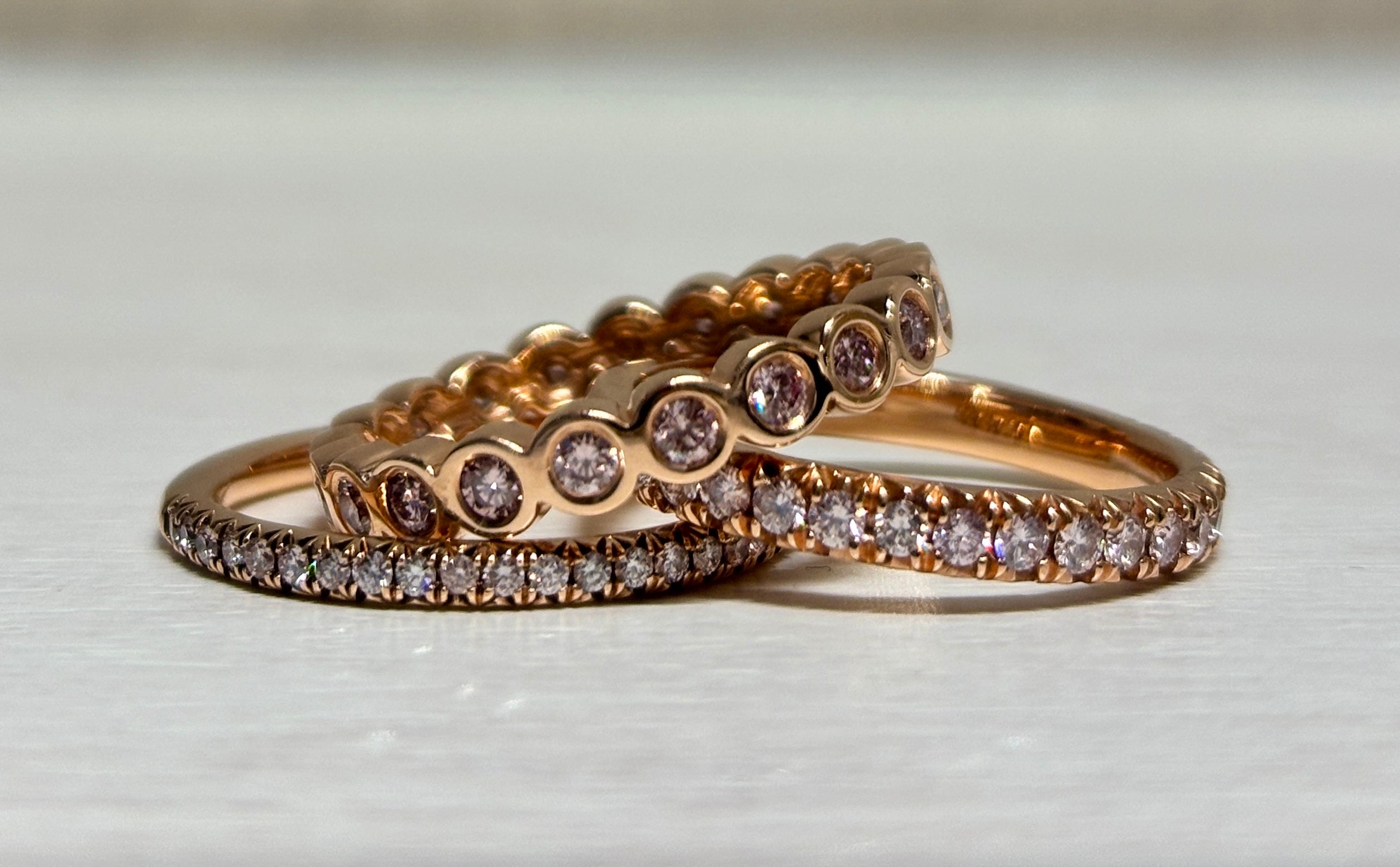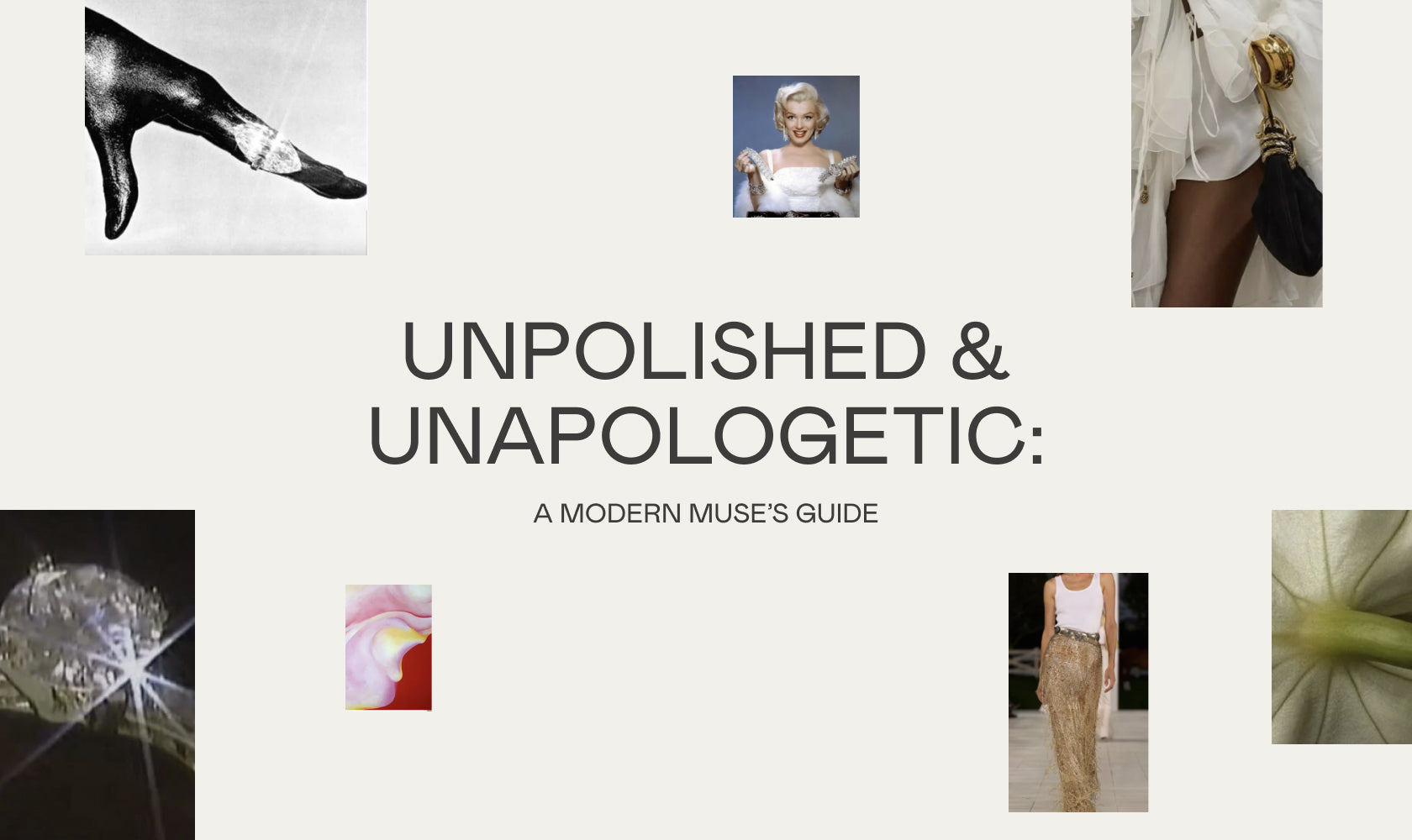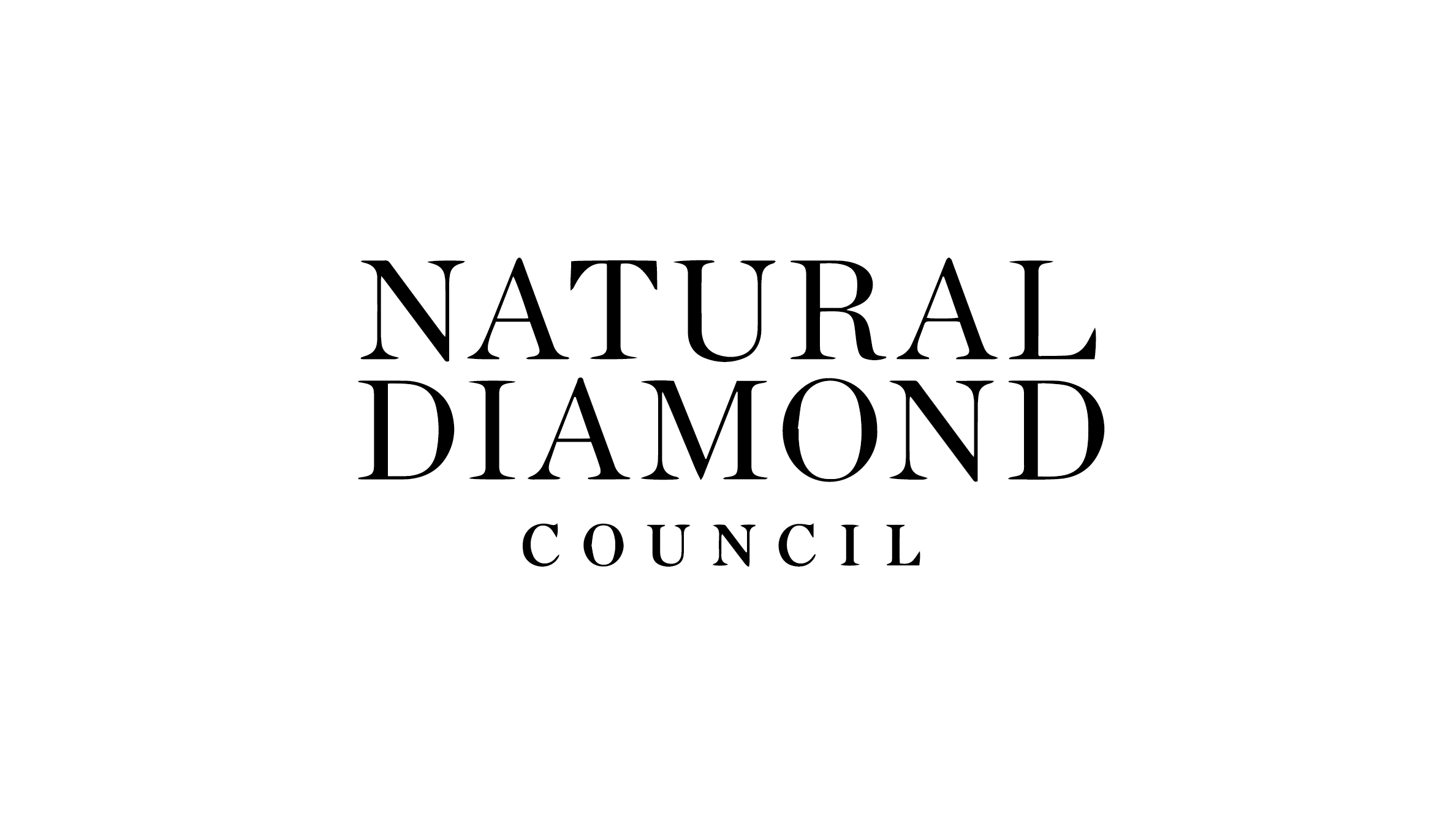PRETTY IN PINK: A CLOSER LOOK AT THE RAREST-COLORED DIAMOND

AESIRA
Pink diamonds are having a moment—but true natural pink diamonds are in a league of their own. Unlike their lab-grown lookalikes, these rare gems are hardly ever seen in traditional retail spaces. Instead, they pass through the hands of collectors, auction houses, and the most exclusive luxury maisons. Their allure lies in their delicate, naturally occurring blush tones—an effortless beauty that only Mother Earth can craft.
White diamonds are probably the first ones you think of when picturing a traditional engagement ring. Much like all things, AARYAH is here to shed a little light on the diamond-encrusted road less travelled: Pink Diamonds.
Read on for your all-encompassing guide to these blushing beauties.

VAL
VALUE & RARITY
Pink diamonds are not only the rarest-colored diamond, but also carry an air of mystery as little is known about their true origin. In other colored diamonds, like brown or yellow, color intensity determines the rarity and value of each stone. Pink diamonds stand out from the crowd as they naturally occur less frequently. Like other diamonds, however, they are still graded on a scale from faint, very light, light, fancy light, fancy intense, fancy deep, to fancy vivid. Fancy vivid pink diamonds are the most expensive diamonds on the market, at typically 20 times the value of a white diamond.
Fun Fact: A 59.6 carat fancy vivid pink diamond named the Pink Star holds the record for most expensive diamond sold at auction to date.
Because of their rarity, matching pink diamond stones can be extremely difficult, which is why you will often find them in solitaire settings. Our pink diamond wedding bands were carefully sourced by our team over time to find the perfect tone matches for these one-of-a-kind rings.
RAINA - VAL - LULAH
SOURCE & ORIGIN
Adding to the value of pink diamonds is their limited supply. Nearly all natural pink diamonds were mined from the Argyle Mine in Western Australia, including pink diamonds from AARYAH. Before closing in 2020, the Argyle Mine produced approximately 20 million carats of diamonds each year, of which less than 0.1% were pink. Despite this low percentage, it was the most well-known pink diamond mine worldwide, accounting for ~90% of pink diamond production each year since 1983.
RAINA
While scientists were uncertain for years over the true origin of pink diamonds’ natural hue, it has been determined to be a result of immense pressure and perfect circumstances (much like the perfect wedding). For typical colored diamonds, their vibrant tones are a result of chemical impurities during diamond formation; For example, blue diamonds are a result of the presence of boron. In the case of pink diamonds, exponential pressure and heat over time transform their inherent lattice structure into compressed wood-like grains. Due to the tight compression, only pink light can penetrate the diamond.
We hope this answers all of your pink diamond questions and more, but feel free to reach out to our team anytime if new ones arise. To schedule an appointment to view our pink diamond rings, head over to our booking page here.






Comments